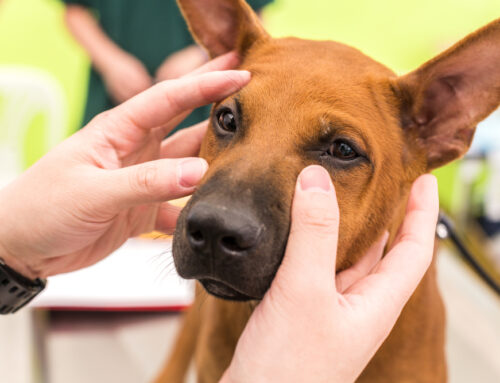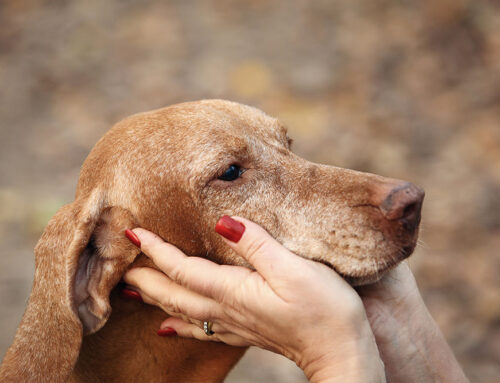As cat parents, we quickly pick up on subtle shifts in our feline companions’ behavior—especially when something doesn’t feel quite right. If your cat has started making frequent trips to the litter box, straining to urinate, or even urinating outside the box, you’re not alone. These are common signs of Feline Lower Urinary Tract Disease (FLUTD), a condition that can be frustrating, painful, and life-threatening for cats.
Whether you’re noticing symptoms for the first time or managing recurring episodes, Central Kentucky Veterinary Center is here to help you navigate FLUTD with the information, care, and compassion your cat deserves.
What Is FLUTD?
FLUTD refers to a group of conditions affecting a cat’s bladder and urethra. It’s not a single disease, but a collection of urinary tract disorders that share similar symptoms—like straining, urinating frequently, or blood in the urine.
These symptoms can range from mild discomfort to medical emergencies, and prompt attention can prevent more serious complications. Understanding FLUTD helps you take proactive steps to protect your cat’s comfort and long-term health.
What Causes FLUTD?
There are several possible causes behind the symptoms of FLUTD. Some are more common than others, and in many cases, more than one factor may be involved:
1. Feline Idiopathic Cystitis (FIC)
The most common cause of FLUTD, FIC involves inflammation of the bladder with no identifiable infection. It’s strongly linked to stress and environmental changes. Learn more about FIC here.
2. Urinary Crystals and Stones
Mineral accumulations can form crystals or stones in the bladder, irritating the lining or even blocking urine flow. Understand urinary stones and how they can impact your cat.
3. Bacterial Infections
While less common in younger cats, urinary tract infections (UTIs) can play a role—especially in older or immunocompromised pets. Explore feline UTIs.
4. Urethral Plugs
These are life-threatening blockages formed from a mix of crystals, mucus, and cells. Male cats are especially at risk due to their narrow urethras. Read more about urethral obstruction.
5. Other Causes
Less commonly, FLUTD may be related to:
- Anatomical abnormalities
- Bladder tumors (neoplasia)
- Concurrent conditions like diabetes
Signs of FLUTD: What to Watch For
Common Symptoms
- Straining to urinate
- Frequent trips to the litter box with little output
- Blood in the urine (hematuria)
- Urinating outside the litter box
- Excessive licking of the genital area
More Concerning Signs
- Lethargy and lack of appetite
- Vomiting or hiding
- Vocalizing in pain
- Swollen or firm abdomen
Emergency Warning Signs
- Straining with no urine production
- Collapse or sudden behavior change
- Vomiting alongside urinary issues
If you notice these signs, seek veterinary care immediately. A blocked urethra is fatal without intervention.
How FLUTD Progresses Without Treatment
FLUTD can move from mild to critical in a short time. Without treatment, your cat could experience:
- Bladder overdistension and rupture
- Kidney damage from urine backup
- Infection and worsening inflammation
- Chronic pain and urinary behavior issues
Preventing these complications starts with early detection and the right treatment plan.
Diagnosing FLUTD: What to Expect at the Vet
At Central Kentucky Veterinary Center, we take a thorough approach to diagnosing FLUTD:
- Physical exam to assess bladder condition and pain
- Urinalysis to evaluate pH, blood, crystals, and inflammatory markers
- Urine culture if infection is suspected
- Bloodwork to assess kidney health and hydration
- Imaging (X-ray or ultrasound) to detect stones, thickened bladder walls, or tumors
- Cystoscopy (rare, specialized cases) for direct visualization of the bladder
These tools help us rule out serious conditions and tailor the best care plan for your cat.
FLUTD Treatment Options
The right treatment depends on the cause. Here’s what we may recommend:
Pain Management
- Prescription NSAIDs or pain relief medications
- Anti-inflammatory drugs to ease bladder irritation
Infection Treatment
- Targeted antibiotics if a bacterial UTI is confirmed
Special Diets
- Formulated foods to dissolve crystals or prevent stone formation
Explore urinary health diets
Hydration Support
- Encourage water intake with wet food, water fountains, or broth
- Increased hydration helps flush the bladder and reduce recurrence
Stress Reduction
- Environmental enrichment: climbing structures, hiding spots, interactive toys
- Use of Feliway diffusers to create a calming environmentMedication for Urethral Relaxation
- Prazosin or other alpha-blockers may help reduce the risk of obstruction
Advanced Interventions
- Catheterization to relieve a blockage in emergency cases
- Perineal Urethrostomy (PU) surgery for male cats with recurring obstructions
– Discover how PU surgery works
How to Prevent FLUTD and At-Home Support Tips
While not all cases are preventable, you can reduce your cat’s risk with the following steps:
- Provide fresh, clean water at all times. Offer varied water sources—some cats prefer fountains, while others prefer shallow bowls
- Feed a high-quality, vet-recommended diet. Encourage weight control with regular activity and portioned meals
- Use multiple litter boxes, cleaned regularly. Keep litter boxes in accessible, quiet areas. Use enzymatic cleaners for urine accidents (avoid ammonia-based products)
- Promote daily play and reduce environmental stress
- Document changes in urination patterns and behavior for your vet
Preparing for Your Vet Appointment
To get the most out of your visit, bring:
- A fresh urine sample, if possible
- A list of your cat’s current medications and diet
- Notes on symptoms, behavior changes, or recent stressors
- Photos or videos of any unusual behavior (e.g., straining)
Questions to Ask:
- What is causing my cat’s symptoms?
- What treatment options are available?
- How can I reduce the chances of recurrence?
- What signs should I monitor for at home?

Frequently Asked Questions
Is FLUTD contagious?
No. However, cats in high-stress environments—like multi-cat households—may be more susceptible.
Can FLUTD be cured?
FIC and some other causes cannot be permanently cured, but they can be effectively managed long-term with the right plan.
Is FLUTD more common in males?
Yes—especially when it comes to life-threatening urethral blockages, due to anatomical differences.
We’re Here to Help
Dealing with FLUTD can feel overwhelming—but you don’t have to do it alone. At Central Kentucky Veterinary Center, our experienced team is here to help you understand, manage, and prevent urinary issues in your cat with compassion and clarity.
If you’ve noticed any signs of urinary discomfort or behavioral changes in your cat, schedule an appointment today.







Leave A Comment